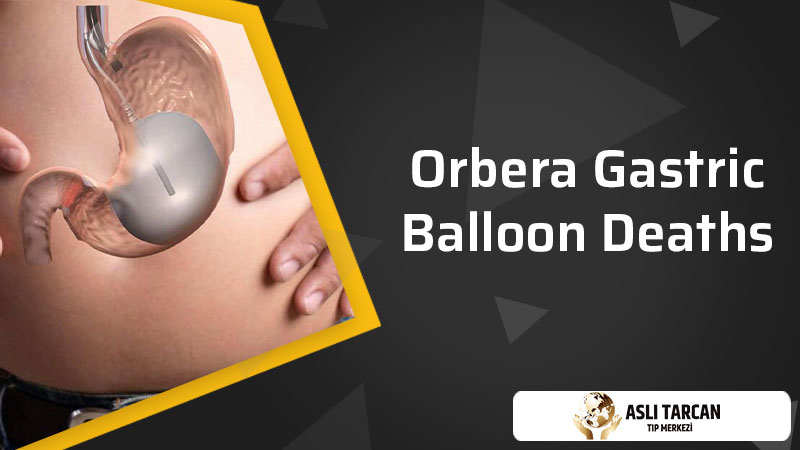The Orbera Gastric Balloon deaths, which uses as a one-year gastric balloon, stays in the stomach for one year and insert through endoscopy. The gastric balloon is removed from your stomach via endoscopy after one year. It suits patients who need to shed more weight. Patients with a BMI of more than 27 might consider the 1-year gastric balloon. The Orbera Intragastric Balloon System designs for adult patients suffering from obesity, with a BMI of 30 to 40 kg/m2, who have tried other weight loss programs, such as diet and exercise, as well as behavior modification programs, but have not been successful in losing weight or keeping it off.
Orbera Gastric Balloon Deaths: What Is Orbera Gastric Balloon?
You must be willing to commit to a 12-month regimen, beginning when the device implant and ending 6 months after the device is withdrawn, to use the Orbera gastric balloon. You must follow a healthy diet and activity regimen as part of this program. If you don’t stick to the food and exercise plan, you won’t see any results.
You must be willing to commit to a 12-month regimen, beginning when the device implant and ending 6 months after the device is withdrawn, to use the Orbera gastric balloon. So, you must follow a healthy diet and activity regimen as part of this program. You will not lose substantial weight if you do not follow the diet and exercise regimen, and you may not lose any weight at all if you do not follow the diet and exercise program. You may be aware that losing weight and maintaining it is a difficult task. A team of physicians, physiologists, and nutritionists will monitor your progress while you follow this program. They will become a member of your team and will assist you in maintaining your commitment to good eating and exercise practices.
Orbera Gastric Balloon Deaths
Gastric balloon techniques have a fatality rate of less than 0.1 percent. These rates have decreased as the quality of surgical equipment has improved because of advancements in technology and expertise. The risk of fatality from balloon applications is now estimated to be fewer than four individuals per 10,000. It’s possible that you’ll have stomach pain, nausea, or vomiting at first. Such problems are managed with medicines administered orally and intravenously, and the patient gradually adjusts to the balloon. Again, tiredness may occur in the first few weeks as a result of the reduced daily fluid consumption.
The Orbera Gastric Balloon will only last six months in your stomach. Any longer puts you at danger of problems, such as bowel blockage, which can be deadly. Orbera may not be appropriate for all patients. A physical examination and a conversation with your doctor about your medical history will decide whether you are a candidate for the Gastric Balloon. Furthermore, your doctor may discover internal problems like as stomach inflammation or ulcers while implanting the device, excluding you from having the Gastric Balloon. If you are pregnant, planning to get pregnant within the next six months, or nursing, you cannot take Orbera.
With or without surgery, there are numerous alternatives for weight loss methods that restrict consumed meals. People who are obese but haven’t gained a lot of weight may choose the non-surgical Orbera gastric balloon technique for more challenging treatments like surgery.
Orbera is a weight-loss procedure that involves inserting a sterile liquid-filled gastric balloon into the stomach. People lose an average of 9 to 14 pounds with this approach. The following is the basic Orbera use procedure: The balloon is inflated and inserted into the stomach. The inflated balloon takes up about a third of the stomach’s capacity.
What Are The Components Of Orbera?: Orbera Gastric Balloon Deaths
Silicon and saltwater are the main components of Orbera. The balloon that is inserted into your stomach is composed of silicone and will not rupture under normal circumstances. The same procedure is use to inflate the balloon, which is insert through endoscopy. Depending on how much weight the individual wants to shed or the size of their stomach, this amount of water ranges between 400 and 700 ml. One of the most essential factors to examine when determining whether a medicine or medical procedure is trustworthy is whether it has received FDA clearance. This document, produced in the United States, attests to the safety of pharmaceuticals and medical devices.
Orbera received FDA clearance in 2015, and while it has not used for a long time, it is a form of the gastric balloon that use safely for many years. This sort of balloon approves as well. Orbera implant goal is not to lose consciousness, but to avoid experiencing any discomfort throughout the operation. The balloon advance to the stomach by endoscopic technique after anesthesia. The endoscopic technique uses to replenish the saline balloon that put in the stomach. All devices remove at this point, and the patient now has a gastric balloon.
How Long Does The Orbera Stay In Stomach?
The Orbera procedure will take about 20 minutes. Blood pressure, respiration rate, and other measures such as height, weight, and anesthetic will require more time. It advises that you arrive at the clinic at least one hour before your procedure. People only keep under observation for a few hours once the procedure does. When the patient begins to feel better, he or she discharges and may resume his or her normal routine.
How long does the Orbera stay in the stomach? This therapy is only good for six months. At the conclusion of the sixth month, the implant balloon should be withdrawn.
Within 6 months, the balloon reaches a size that allows it to remove, and the gastric balloon must remove in order for patients to lose weight. The endoscopic technique recommends removal, just as it is for insertion. The individual gives a very modest dosage of anesthetic.
The water in the gastric balloon evacuates via an endoscopic procedure. Your BMI should be between 30 and 35. If your BMI is less than 30, but you are still overweight, you may benefit from this treatment if you speak with your doctor. People having a BMI of more than 35 will find it difficult to attain the required donation quantity using this approach. When it comes to reducing weight, a gastric balloon should not be your first option.
Are there Cases of Orbera Gastric Balloon Deaths?
Although there are many people who have been treated using the Orbera gastric balloon, there have been very few reported instances of Orbera gastric balloon deaths. In fact, studies suggest that the major risks associated with Orbera gastric balloon procedure are relatively low when compared to other weight loss methods. However, it is important to keep in mind that any medical procedure carries its own risks and should be discussed thoroughly with a healthcare professional before proceeding. Additionally, patients should take necessary precautions during and after their treatment to ensure their safety and well-being. A full understanding of these risks should be discussed in detail between the patient and the doctor prior to any decision being made regarding Orbera gastric balloon placement.

With proper monitoring from a medical professional and adherence to instructions, Orbera gastric balloon treatments can provide positive results with minimal risk.
Overall, while there are reports of rare cases of Orbera gastric balloon deaths due to complications, the vast majority have gone on without incident or serious adverse effects. With that knowledge in hand, patients hoping to benefit from Orbera gastric balloon surgery can do so with confidence that they are taking an informed approach to their health and well-being.



